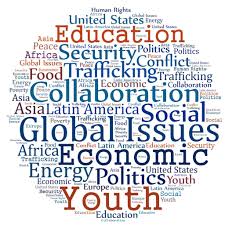Tackling Global Water Scarcity: A Collaborative Path to Sustainable Access
The escalating global water crisis demands immediate and comprehensive solutions. Driven by population growth and the intensifying impacts of climate change, water scarcity threatens communities worldwide. However, through collaborative action and a commitment to sustainability, we can secure access to clean water for all. This article outlines fifteen key strategies for achieving this crucial goal, emphasizing a unified global approach to water resource management and environmental protection.
1. Modernizing Water Infrastructure: Significant investment in upgrading water infrastructure is paramount. This includes constructing and improving reservoirs, pipelines, and water treatment facilities to ensure efficient water distribution and minimize losses. Such investments are crucial for both developed and developing nations, bridging infrastructure gaps and improving access to safe drinking water.
2. Embracing Water Conservation Practices: Promoting widespread adoption of water-saving techniques is essential. This involves encouraging rainwater harvesting, implementing efficient irrigation methods (such as drip irrigation), and promoting the use of water-efficient appliances in homes and industries. Public awareness campaigns and incentives can significantly drive this behavioral change.
3. Maximizing Water Recycling and Reuse: Treated wastewater can be a valuable resource. Investing in and implementing robust wastewater treatment systems allows for the reuse of this water in non-potable applications like irrigation and industrial processes. This reduces pressure on freshwater sources and promotes a circular water economy.
4. Strengthening International Cooperation: Water scarcity transcends national borders, requiring global collaboration. International partnerships should facilitate knowledge sharing, resource allocation, and technology transfer to address this shared challenge effectively. Joint projects and agreements are vital for equitable water management across regions.
5. Elevating Water Awareness: Education is a cornerstone of sustainable water management. Public awareness campaigns should highlight the importance of water conservation, the impacts of water scarcity, and the individual actions that can contribute to a water-secure future. Engaging communities through effective communication is crucial.
6. Investing in Research and Innovation: Continuous investment in research and development of innovative water technologies is vital. This includes exploring advanced water treatment techniques, developing drought-resistant crops, and improving water management systems. Public and private sector partnerships can accelerate technological advancements.
7. Promoting Sustainable Agricultural Practices: Agriculture is a major water consumer. Transitioning to sustainable agricultural methods, such as precision irrigation and the cultivation of drought-tolerant crops, can significantly reduce water usage in the agricultural sector while maintaining food production.
8. Advancing Desalination Technologies: Desalination offers a potential solution for water-stressed regions. Investing in research and development to improve the efficiency and reduce the cost of desalination technologies can make this a viable option in the future, particularly in coastal areas.
9. Implementing Robust Water Governance: Effective governance and regulations are crucial for sustainable water management. Clear policies, enforceable regulations, and transparent monitoring systems are necessary to ensure responsible water use and prevent overuse and pollution.
10. Empowering Community-Led Initiatives: Local communities play a vital role in managing their water resources. Supporting community-based initiatives, including the establishment of water management committees, allows for localized solutions tailored to specific needs and promotes ownership and responsibility.
11. Enhancing Water Monitoring Systems: Comprehensive water monitoring systems are essential for effective water management. Real-time data on water availability, usage, and quality allow for informed decision-making, early identification of potential issues, and improved resource allocation.
12. Fostering Public-Private Partnerships: Collaboration between public and private sectors can leverage resources and expertise to develop innovative and sustainable water solutions. Public-private partnerships can accelerate infrastructure development, technology transfer, and financing of water projects.
13. Integrating Water Education into Curricula: Educating future generations about water conservation and sustainable water management is crucial. Integrating water education into school curricula fosters responsibility and empowers individuals to contribute to a water-secure future.
14. Advocating for Supportive Policies: Advocating for policies that prioritize sustainable water management at national and international levels is essential. This includes promoting legislation that protects water resources, encourages water conservation, and supports investment in water infrastructure.
15. Building Community Resilience: Strengthening the resilience of vulnerable communities to water scarcity is critical. This involves providing access to safe water sources, offering training on water conservation techniques, and implementing early warning systems for droughts and other water-related emergencies.
In conclusion, resolving the global water crisis requires a multifaceted approach that prioritizes collaboration, sustainability, and innovation. By implementing these fifteen strategies, we can strive towards a future where everyone has access to clean, safe water, fostering a healthier planet and more equitable world. Join the movement towards a water-secure future.
```









No comments yet. Be the first to share your thoughts!